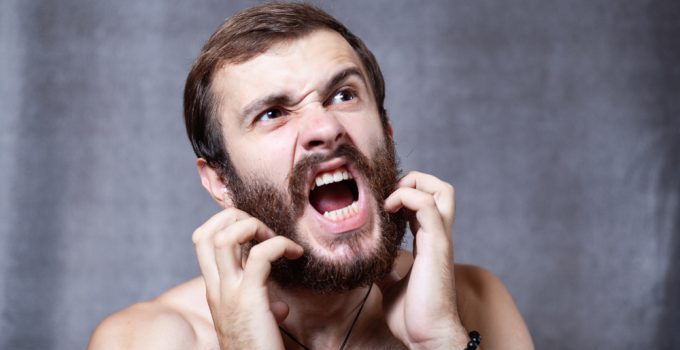Beard itch is not something that you have to deal with. In this article, we will look at all the causes of beard itch and show you how to stop beard itch dead in its tracks.
Beard itch can begin the day you start to growing a beard, just shaved, or have a full beard. And anyone who has experienced beard itch knows that the symptoms can range from mild to incredibly overwhelming. Constantly itching your beard can be embarrassing and can even have negative impacts on your health and life.
For many people, they take a drastic step to solve the problem.
Some people with an itchy beard may want to shave it all off to stop the irritation, while others who get it after shaving may avoid shaving altogether. Although these drastic measures can solve the problem, they are often not needed.
So, put the razor down, take a deep breath, and let’s get this problem solved one step at a time.
4 Reasons for Beard Itch
Your beard can begin to itch for a variety of reasons. By understanding the root cause of the itchiness, you can create a plan to target the itch source and remedy it so your beard can grow without issues.
1. Dry Skin
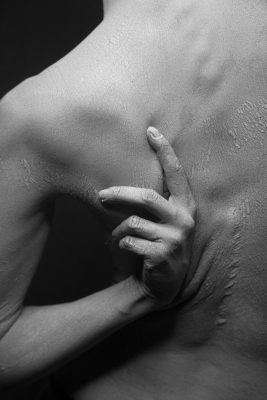 When the skin loses moisture, it becomes rigid and tough. Eventually the skin begins to crack and become itchy.
When the skin loses moisture, it becomes rigid and tough. Eventually the skin begins to crack and become itchy.
There are many causes of dry skin, so being aware of them is the first part of the battle.
First off, dry skin tends to be more prevalent in colder conditions. During winter, outdoor air tends to have lower humidity, which means there is less moisture content in the air. Also, people tend to spend more time indoors around heated air, which also is very dry. This inevitably leads to the skin losing moisture over time and becoming dehydrated.
Secondly, exposure to harsh chemicals can cause the skin to dry out. Many people use soaps and cleansers on their beards that are loaded with toxic ingredients that cause excess damage to their skin without even knowing it.
Finally, excessive use of hot water on your skin can also increase the rate at which it dries out.
All in all, we want to make sure that we are taking steps to keep the skin under our beard properly hydrated, so it doesn’t dry out and become itchy. We can do this by applying oils and creams to the skin to protect and nourish it. Castor oil is a great option that is filled with different nutrients.
2. Ingrown Hairs
Ingrown hairs happen when the hair grows into the follicle instead of growing out of the follicle. The follicle becomes inflamed and gets painful and itchy. If many follicles are affected at the same time, this can be very itchy.
People with curly hair are often most susceptible to this condition since the hair bend can get caught in the follicle, but it is not limited to them. Another reason for ingrown hairs is clogged follicles that are often blocked by dead skin cells or dirt.
Usually, ingrown hairs will go away on their own, but sometimes it may lead to infection and need to be treated by a doctor.
3. Fungal Infections
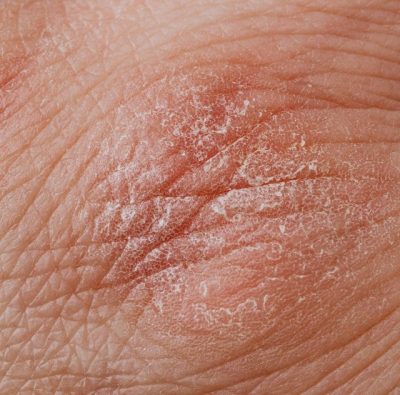 If you ever had a fungal infection before, you know that they typically are patches of red and crusty skin. Although they are easier to spot on your skin, frequently, they are hidden under your beard.
If you ever had a fungal infection before, you know that they typically are patches of red and crusty skin. Although they are easier to spot on your skin, frequently, they are hidden under your beard.
By doing a closer examination, you may be able to see if you have a fungal infection in the skin beneath your beard. Fungal infections like tinea barbae often form in high moisture environments like in beards.
By treating the fungal infection, you can ensure you will have an itch-free beard again.
We can do this by applying oils and creams to the skin to protect and nourish it. Castor oil is a great option that is filled with different nutrients.
4. Folliculitis
Folliculitis is a skin condition that causes inflamed and infected hair follicles.
Although there are several forms of folliculitis, the most common one is a result of the staph bacteria. Other causes of folliculitis include fungal infections, viruses, and physical trauma.
Razor bumps in the most common form of folliculitis in men with beards.
Properly treating this condition will prevent further infections and stop beard itch.
5. Seborrheic Dermatitis
Seborrheic dermatitis is a skin condition that is most known as dandruff. Although most people think that this can only occur on the scalp, it can also appear on the face and beard. In this case, it is known as beard dandruff, or beardruff.
Not only is this condition itchy, but it can leave embarrassing flakes in your beard and on your shirt.
The main reason that it forms in these areas is because it thrives in oily conditions. Seborrheic dermatitis may eventually go away on its own, but there are ways to treat it.
One way to treat it is to make sure you are washing your beard properly. This will help prevent oil buildup.
Also, products that contain antifungals could help improve this condition. Similarly, tea tree oil and aloe vera have also been known to fix this issue.
5 Ways to Stop Beard Itch
Now that we have looked at why beard itch starts, let’s take a look at some of the simple steps you can take to stop it.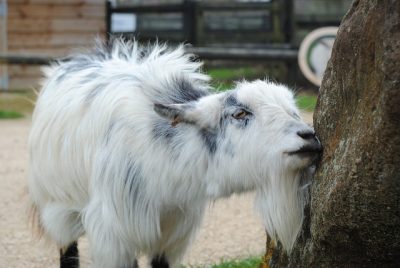
1. Cleanse Your Beard Properly
As we already learned above, regularly cleansing your beard can keep oil levels low on the skin beneath your beard and face. But the reasons it helps with beard itch doesn’t stop there.
Washing your beard properly with beard wash can reduce fungal infections and help dry skin.
The first mistake men make when cleaning their beard is using harsh cleansers that are not meant for the beard and are loaded with harsh chemicals. By using the best beard shampoos, you know you are getting a chemical-free product.
The second main mistake that men make when washing their beard is using hot water. Hot water dries out your skin and beard, so be sure to use lukewarm or cold water. We give you the rest of the mistakes in our How To Clean Your Beard article.
2. Moisturize
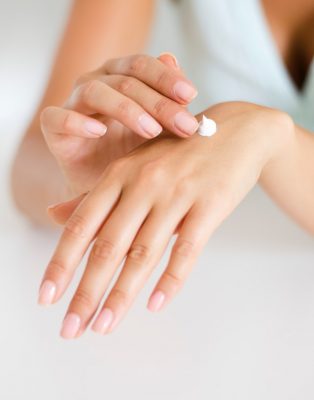 Moisturizing your beard is very important and will help clear up beard itch. This is especially important to do in the winter with the cold and dry air.
Moisturizing your beard is very important and will help clear up beard itch. This is especially important to do in the winter with the cold and dry air.
The best way to moisturize your beard is by using the best beard oils. Most people think that beard oil is for your beard, but it is actually good for the skin under your facial hair. Check out the full list of benefits of beard oil here.
When you apply beard oil, be sure to massage it deep into your skin and hair follicles. These oils contain essential hydrating vitamins like Vitamin E that your skin will love.
Another beard product that men use to help maintain hydration is beard conditioner. These products can be used individually or in combination for faster relief.
3. Use Products with Antifungal Ingredients on Your Beard
If you are suffering itch because of fungal infections, be sure to choose beard products with antifungals in them. Many of the best beard products contain essential oils.
One of the benefits of coconut oil and tea tree oil is that they are both antifungal ingredients. So keep an eye out for them when looking at beard grooming products.
4. Make Sure You are Shaving and Trimming Your Beard Properly
If you want to prevent ingrown hairs and stop the itching related to that, be sure that you are shaving properly.
Here are some of the main ways to shave to minimize the chance of irritation and infections.
First, be sure that you are using a clean and sharp blade. Dirty blades carry bacteria that could cause infection. Similarly, dull blades will either pull the hair out and cut the hair incorrectly, both of which increase the chance of ingrown hairs.
Secondly, shave in the direction of hair growth. Shaving in the opposite direction can push dirt and dead skin into the follicle, which may clog it. Also, it may push the hair into the follicle and create further problems. Using a beard brush helps too.
Check out the full guide on how to trim your beard for more info.
5. Use Medications if Necessary
 Some of the more difficult to treat conditions may require medication. Things like Nizoral, corticosteroids, and prescription antifungals may often be prescribed by a doctor in more serious conditions.
Some of the more difficult to treat conditions may require medication. Things like Nizoral, corticosteroids, and prescription antifungals may often be prescribed by a doctor in more serious conditions.
If you are having trouble stopping beard itch by using natural methods, it may be time to see a dermatologist.
Conclusion
Beard itch is not a condition that you have to deal with. By following the effective advice in this article, you can get to the cause of the itchiness so you can feel comfortable growing a beard.
If you noticed, many of the recommendations are the same as in our How To Make Your Beard Soft article. That is because both of these conditions deal with skin and follicle health. By neglecting important areas of beard care, you effect the quality of your skin and hair.
So, in the end, by adding extra steps to your daily beard grooming routine, you will feel like a new man with a soft, healthy, and itch-free beard.

